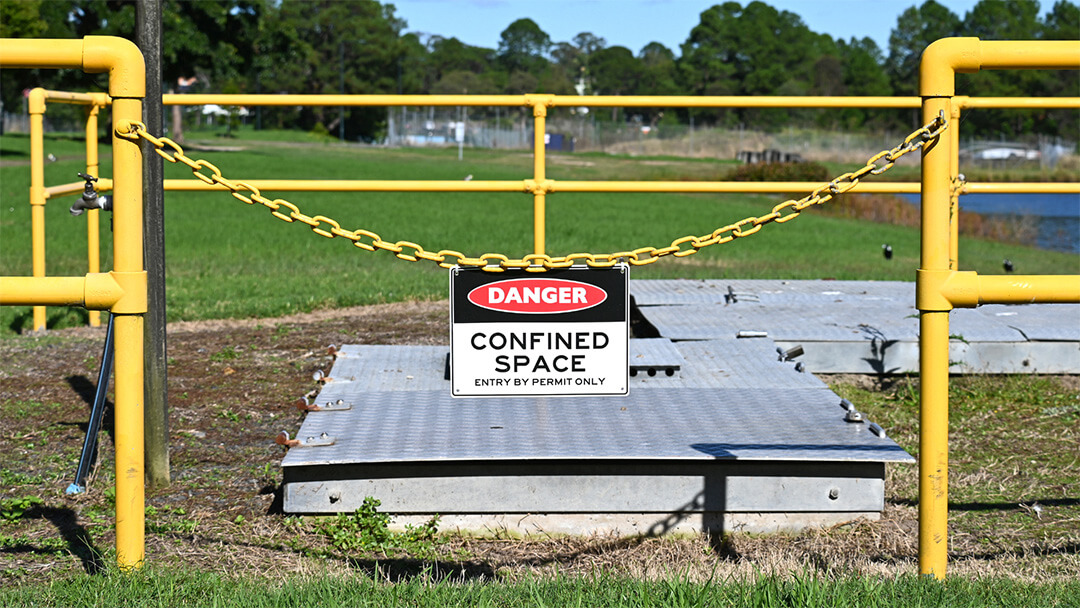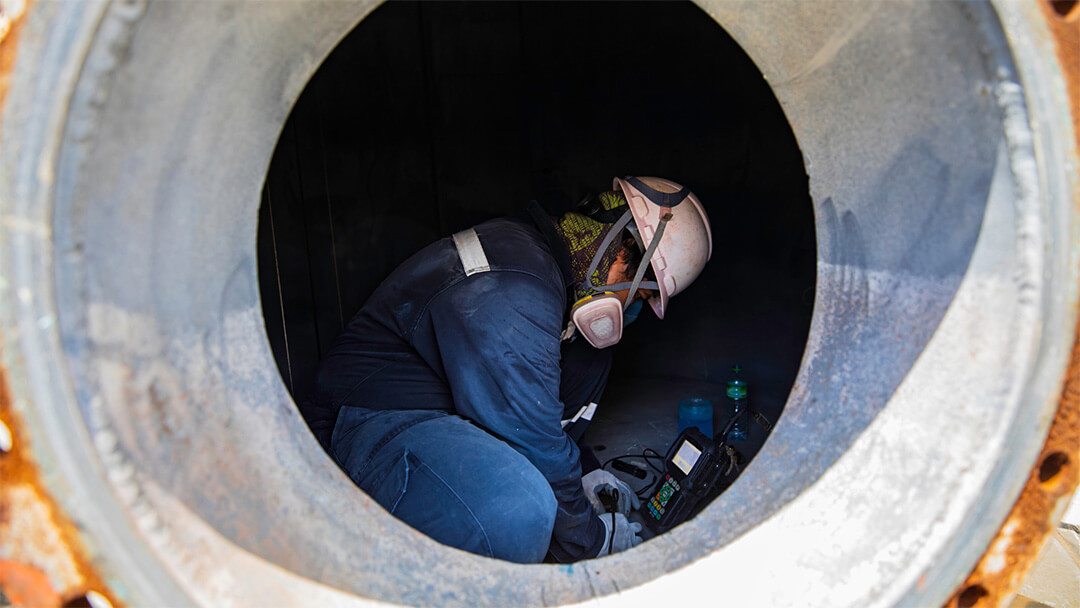Confined space permits made easy: Streamline your safety process with a permit to work app
Streamline confined space activities
What is a confined space permit?
A confined space permit to work is a formal document that authorises and regulates the entry and work within a confined space. It outlines the specific tasks, potential hazards, and necessary safety measures for each confined space entry. It also assigns roles and responsibilities to the workers involved, such as the entrant, the attendant, and the supervisor.
Confined space permits are mandated by safety regulations to ensure controlled entry and adherence to best practices. They help mitigate the risks associated with confined spaces and promote worker safety. Imagine a confined space permit as a roadmap for safe confined space work, outlining the essential steps to take before, during, and after entry.
Confined space permit requirements: Ensuring a safe work environment
A comprehensive confined space permit system adheres to 10 key components that must be followed before, during, and after the entry. These are:
- 1. Isolation: Before entering a confined space, it’s vital to isolate it from any hazardous energy sources. This includes shutting off machinery, locking out electrical circuits, and ensuring no unexpected energy release can occur.
- 2. Atmosphere purging: Confined spaces often have poor ventilation, which can lead to hazardous atmospheres. Atmosphere purging involves removing or replacing the air within the space to make it safe for entry.
- 3. Ventilation: Proper ventilation ensures fresh air circulation inside the confined space. Ventilation systems help maintain safe oxygen levels and remove any toxic gases or fumes.
- 4. Respiratory protective equipment: Workers entering confined spaces must wear appropriate respiratory protection. This equipment safeguards against inhaling harmful substances and maintains breathable air.
- 5. Communication and safety monitoring: Effective communication is crucial during confined space work. Monitoring systems track conditions inside the space and alert workers to any changes or risks.
- 6. Entry and exit procedures: Clearly defined procedures for entering and exiting the confined space are critical. These include safety checks, communication protocols, and emergency evacuation plans.
- 7. Entry permits: Formal entry permits outline the specific tasks, hazards, and safety measures for each confined space entry. They serve as a written authorization to proceed with the work.
- 8. Isolation measures: Detailed steps for isolating energy sources, such as lockout/tagout procedures, prevent accidental activation during work inside the confined space.
- 9. Atmospheric testing: Regular testing of the space’s atmosphere ensures it remains safe. Parameters include oxygen levels, flammable gases, and toxic substances.
- 10. Training and competency: Workers involved in confined space work must have adequate training and competency in the relevant procedures, equipment, and hazards. They must also be aware of their roles and responsibilities.
These 10 components form a comprehensive and effective confined space permit to work system that protects workers from harm and ensures compliance with regulations.
How long is a confined space permit valid for?
There’s no universally mandated validity period for confined space permits. The validity typically depends on the specific job and should be determined during the permit issuance process. Generally, permits are valid for a set timeframe based on the estimated work duration. Renewing the permit is essential if work extends beyond the initial validity period.
How can a confined space permit app help?
Managing these components manually can be challenging, time-consuming, and prone to errors. Paper-based permits can get lost, damaged, or outdated. Communication can be delayed or disrupted. Monitoring can be inconsistent or inaccurate.
That’s why digitisation of the confined space permit to work system is a game-changer for many industries. Digitisation involves using construction health and safety software applications, like Novade, to automate and streamline the processes involved in issuing, approving, monitoring, and closing permits.
A dedicated confined space permit app can significantly streamline the process and enhance safety by:
- Simplifying permit creation and management: Fill out digital forms, select pre-defined hazards from a library, and generate permits electronically.
- Improved visibility and traceability: Maintain a centralised database of all permits issued, approved, active, expired, or closed. This allows workers to access, and update permits anytime, anywhere using mobile devices. It also enables supervisors to track the status and progress of each permit and ensure compliance.
- Enhanced communication and collaboration: Facilitate instant or real-time communication between workers involved in confined space work. It also allows workers to share information such as photos, videos, or documents related to the work or hazards.
- More accurate and reliable monitoring: Continuously monitor the conditions inside the confined space using sensors or cameras that transmit data to a dashboard or alert system. It also allows workers to report any incidents or issues using incident reporting features.
- Better analysis and reporting: Generate valuable data and insights on the performance and effectiveness of the confined space permit to work system. It allows workers to generate reports on key metrics such as number of permits issued, duration of entries, types of hazards encountered, incidents occurred, etc.
Digitisation of the confined space permit to work or work permit is not only a smart move for improving efficiency and productivity but also a vital step for enhancing safety and preventing accidents.
According to a study by McKinsey & Company, digitisation can reduce permit processing time by up to 90%, increase worker productivity by up to 40%, reduce incident rates by up to 50%, and save up to 20% of operational costs.
If you are interested in learning more about how digitization can transform your confined space permit to work system, contact us today for a free consultation.
- Learn more about Novade’s HSE solution
- Learn more about Novade’s permit to work software
The rise of AI in construction management
The rise of AI in construction managementFeatured topics: Introduction: Why AI matters in construction What Is AI and how does it apply to construction? Key use cases of AI in construction management What’s needed to make AI work on site? Common myths and challenges...
Introduction to safety management system
Introduction to Safety Management System (SMS)Featured topics: What is a Safety Management System? Why a Safety Management System matters Safety Management System: The four key elements Why different industries need a tailored approach Common challenges in...
Trends in construction software in Thailand
Construction software trends in ThailandInsights from Khun Pasas, CEO of VR Digital Interview by Denis Branthonne During a recent visit to Bangkok, I had the pleasure of sitting down with Khun Pasas, the Director and Founder of VR Digital. VR Digital is a leading...
The rise of AI in construction management
The rise of AI in construction managementFeatured topics: Introduction: Why AI matters in construction What Is AI and how does it apply to construction? Key use cases of AI in construction management What’s needed to make AI work on site? Common myths and challenges...
Introduction to safety management system
Introduction to Safety Management System (SMS)Featured topics: What is a Safety Management System? Why a Safety Management System matters Safety Management System: The four key elements Why different industries need a tailored approach Common challenges in...







